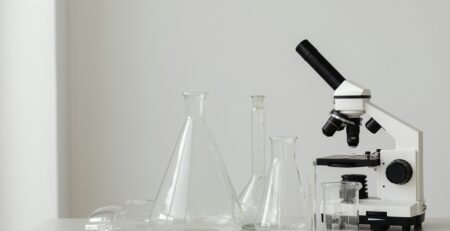29
Aug
Borosilicate vs Polypropylene Beakers – Which is Right for Your Lab?
Choosing between glass and plastic beakers depends on your lab’s priorities—accuracy, durability, or cost-effectiveness. Both borosilicate (BORO 3.3) and polypropylene (PP) beakers play vital roles in Australian laboratories, but their properties make them suitable for very different applications.
Borosilicate Beakers – Accuracy and Heat Resistance
Borosilicate glass beakers comply with ISO 3585 and ASTM E438 standards, making them ideal for heating, solution preparation, and precise measurements. Their low thermal expansion prevents cracking during rapid temperature changes, while etched graduations ensure reproducibility. They’re the go-to option for research labs, QC testing, and university chemistry departments where heat and accuracy matter.
Polypropylene Beakers – Safety and Cost Efficiency
Polypropylene (PP) beakers, conforming to ISO 7056, are lightweight, shatterproof, and resistant to most acids and bases. While they cannot be exposed to open flames or high autoclave temperatures, they excel in teaching labs, fieldwork, and industrial applications where chemical resistance and low cost are priorities. Their translucency also makes them useful for quick volume checks when precision is less critical.
Choosing for Your Lab’s Needs
- For heating experiments → Choose borosilicate beakers.
- For strong acids or alkalis → Polypropylene offers superior resistance.
- For schools and teaching → PP beakers are safer for handling by students.
- For professional research → BORO 3.3 glass ensures reproducibility and compliance with global standards.
Why LabChoice Australia
LabChoice Australia supplies both BORO 3.3 borosilicate and polypropylene beakers, giving labs the flexibility to choose the right material for their workflow. With national delivery and Australian-owned service, LabChoice ensures your lab is equipped with reliable, compliant products.
Comparison Table
| Feature | Borosilicate Beakers (BORO 3.3) | Polypropylene (PP) Beakers |
|---|---|---|
| Heat Resistance | Excellent (ISO 3585, ASTM E438) | Poor (softens > 135 °C) |
| Chemical Resistance | Strong, but not HF | Excellent (acids/alkalis) |
| Transparency | Clear with etched graduations | Translucent with moulded |
| Durability | Breakable but long-lasting | Shatterproof, less precise |
| Applications | Research, QC, heating, titration | Schools, field use, storage |
FAQs
Can polypropylene beakers go in the autoclave?
Yes, up to 121 °C for short cycles, but not for repeated high-temperature sterilisation.
Which beakers are better for quantitative analysis?
Borosilicate glass beakers with Class-etched graduations are recommended for reproducibility.
Can I replace all glass beakers with plastic in teaching labs?
Yes, for non-heating experiments. For heating or advanced chemistry, borosilicate remains essential.
References
- ISO 3585: Borosilicate Glass 3.3 – Specifications
- ASTM E438: Laboratory Glassware – Standards for Quality and Durability
- ISO 7056: Plastics Laboratory Ware – General Requirements

